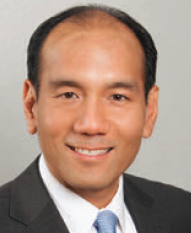I grew up in California’s Central Valley, about a hundred miles south of the recent Camp Fire that claimed the lives of at least 85 people. Stories of heroism mixed with frustration and a failed evacuation have been on my mind. While images of pain and devastation are a mainstay of our news feeds, those from Butte County were particularly disturbing to me. The whole area seems to have been charred to a crisp.
An eye lost to tractional retinal detachment or neovascular glaucoma secondary to unrestrained diabetic retinopathy reminds me of such loss.
The tragedy in both situations, loss of life in California and permanent loss of vision in diabetic retinopathy, is that both could have likely been avoided. Many cases of end-stage diabetic retinopathy can be attributed to at least one of two system failures:
• Failure of detection. In the United States, about half of diabetic patients do not receive their recommended retinopathy screening. Some societies, including those of the United Kingdom, Denmark, Sweden and Iceland, appear to have largely solved this problem. For example, thanks to a systematic screening approach used across the United Kingdom, diabetes has fallen from the first to the fourth most common cause of visual impairment over the past decade. Bravo!
• Failure of adherence to treatment recommendations. Unfortunately, the terminology we use to describe this clinical situation, “non-compliance” and “loss to follow-up,” carry negative connotations, implying that lack of adherence to a given follow-up recommendation is an intentional patient choice. In many cases this is likely not the case, as a multitude of obstacles, many outside of the patient’s immediate sphere of influence, can impact a patient’s ability to return to a given physician appointment.
See page 27 where Daniel Su, MD, and colleagues describe the Wills Eye Hospital experiences with compliance among proliferative DR patients and clinical outcomes after being lost to follow-up for six months or more.
We as retina specialists need to encourage our patients in their medical and personal struggles to maintain compliance, be innovative in developing and implementing better approaches to achieve universal screening, and champion the best treatments for our patients to ensure optimal long-term outcomes. Currently we lose too many eyes to the devastation of diabetic retinopathy. RS
 |




